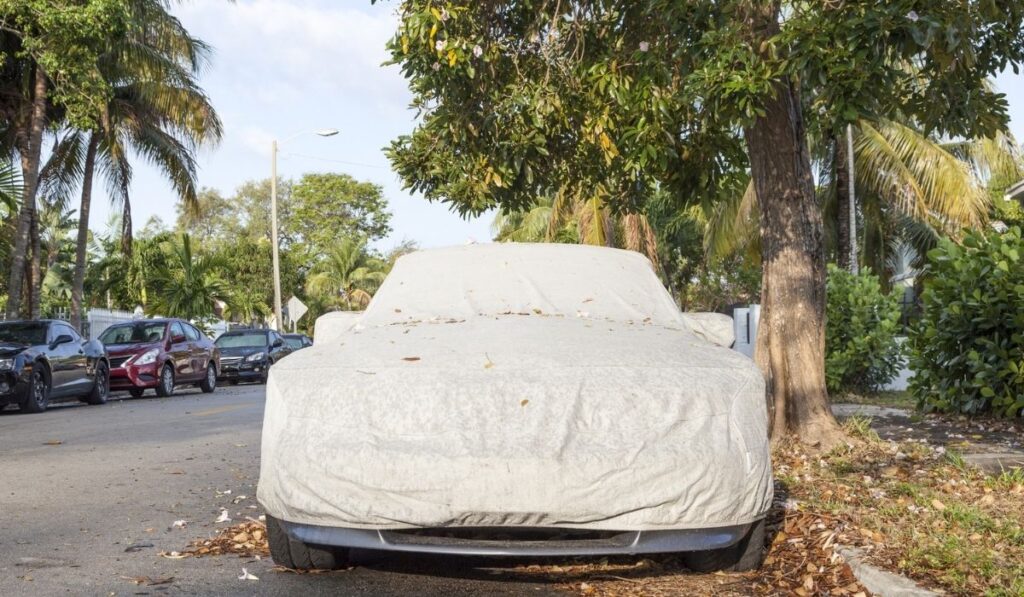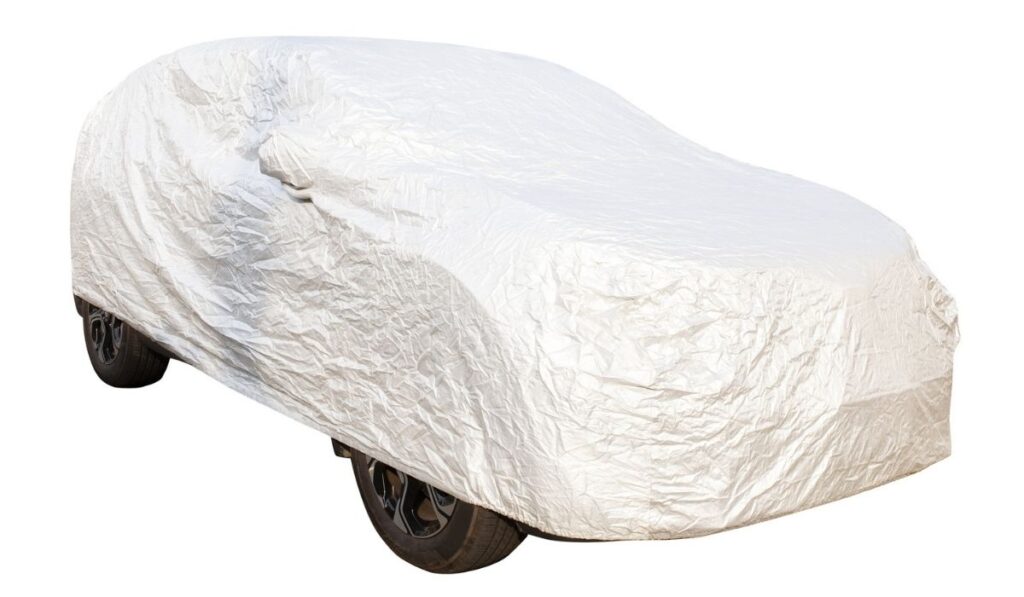If you’re using a breathable car cover that has a snug and tight fit, it should be okay. The problems arise when car covers are too big or cheap covers that prevent moisture from escaping.
If used correctly, no, they are not bad for cars. There shouldn’t be an issue if you get the appropriate size cover for either indoor or outdoor use. Purchase one for your specific make and model car for the best fit. It’s still essential to wash your car regularly to allow airflow and prevent mold.
There are some other tips which are worth noting, such as never using a car cover when the car is wet. Make sure you’re using a breathable car cover to avoid problems such as paint damage, freezing windows, and color bleeding.
Are Car Covers Bad For Cars?

Car covers can be a great way to protect your car and its paint from any foreign impurities, dirt, or debris, especially if you’re parking your car outdoors. Car covers come in different types and sizes, and you need to get the right one that fits your car and your needs best.
Generally, the two main types of car covers are indoor ones and outdoor ones. Indoor car covers tend to be a better fit and are also snugger. You can leave it inside the garage, and it will do a good job of protecting your car against any dust or sand particles.
Outdoor covers are more robust because they’re made to withstand sunlight rays and rain. They don’t fit as tightly as the indoor ones. However, if you’re someone who parks their car outside a lot, it’s worth considering buying one of these. No matter the weather, most of these covers will protect your car anyway.
After getting the right kind of car cover, the most crucial part is that it must fit perfectly. If your car cover doesn’t have a tight, snug fit, it can end up damaging the car. When comparing both types, indoor covers tend to have a better grip on your car due to the material they use.
While it’s understandable that outdoor covers can’t be as tight and snug, it’s still important to look out that they’re not too big. This is because a large cover can flap around in the wind or rain and can end up damaging the car by causing dents and scratches.
You can use accessories such as metal grommets and ropes to keep the cover in place. However, it’s recommended to get one that’s not too big in the first place.
Can Car Covers Be Left On Outside?
Yes, if you have a car cover designed for the outdoors, then it’s absolutely okay to leave it on outside – it’s what it was designed for! Especially outside, be sure not to use substitutes such as tarps for a car cover.
All you need to do is make sure you have the right kind of car cover before leaving your car out in the blazing sun or rain. Car covers generally come in two types, outside covers, and inside covers. Here are some basic differences and qualities of both:
Indoor: These car covers are usually snugger and tighter. They’re usually made from satin or polypropylene. The main goal of these indoor covers is to protect the car from any dirt or dust which might enter the garage or parking space. However, remember to only use these covers indoors, as they’re not made to withstand anything such as UV light.
Outdoor: As the name mentions, outdoor covers provide protection for your car when it’s parked outdoors. Compared to indoor covers, these ones are a lot more durable because they’re made to withstand UV light rays and rainfall.
Usually, high-quality outdoor car covers come with a fleece lining on the inside so that it’s soft when it comes into contact with the paint. Low-quality ones can be made from different kinds of breathable materials. However, they will not provide the same level of protection against dust, sunlight, and rain.
Can Car Covers Be Left On In the Rain?
If you buy a breathable car cover for the outdoors, then yes, you can leave it out in the rain. However, it’s important to understand that you need the right kind of cover for the rain; otherwise, it will trap moisture, which can lead to the formation of mold and mildew.
Breathable car covers allow the moisture that gets trapped inside to escape through the cover and evaporate quickly. This means no moisture or water is stored underneath, protecting your paint job from damage and rust formation.
Sometimes, non-breathable covers have vents in them. Even so, they cannot achieve the same effectiveness as a breathable and water-resistant cover. That is why it’s important to remember that you can run into several problems in the rain if you don’t have a breathable cover. These may include:
Rust and Corrosion: Non-breathable covers will allow moisture to enter the cover. However, it won’t allow it to escape, trapping it inside. This can lead to rust, corrosion, and small scratches.
Color Bleed: If your cover is advertised as waterproof but is still not breathable, it’s best to steer clear of it. A lot of these waterproof covers have color bleeding, which can damage your car’s paint job.
Frozen Windows: If you live in a cold area and you have a non-breathable cover on, it can lead to some issues. The non-breathable cover won’t let water escape, and if there’s a rainstorm followed by cold weather, you can end up with frozen windows. In order to prevent this, the water must evaporate immediately.
Can Car Covers Scratch the Paint?

If you don’t use the right type of covers or the correct size, a car cover can end up scratching the paint on your car.
Car covers tend to come in a variety of different sizes and for different uses. If you completely want to avoid any scratches or damages to your car’s paint job, go with a cover that is specifically made for your car and fits perfectly.
Make sure that your car cover is breathable. Non-breathable car covers allow moisture to enter the cover and prevent it from exiting. This can lead to mold formation as well as mildew. Moisture seeps in the covers and ends up damaging the paint job by causing spots and milky-color stains.
You also want to make sure that the car is completely dry before you throw on a car cover. In many cases, the inner lining of the cover can stick to the wet body of the car, causing marks on the paint.
To avoid scratches, you should also make sure that the fit of your cover is tight and snug. While outdoor covers tend not to have a perfect fit, you can still get something that isn’t flapping around too much. Flapping or moving around can cause the cover to scratch and dent your car paint job.
